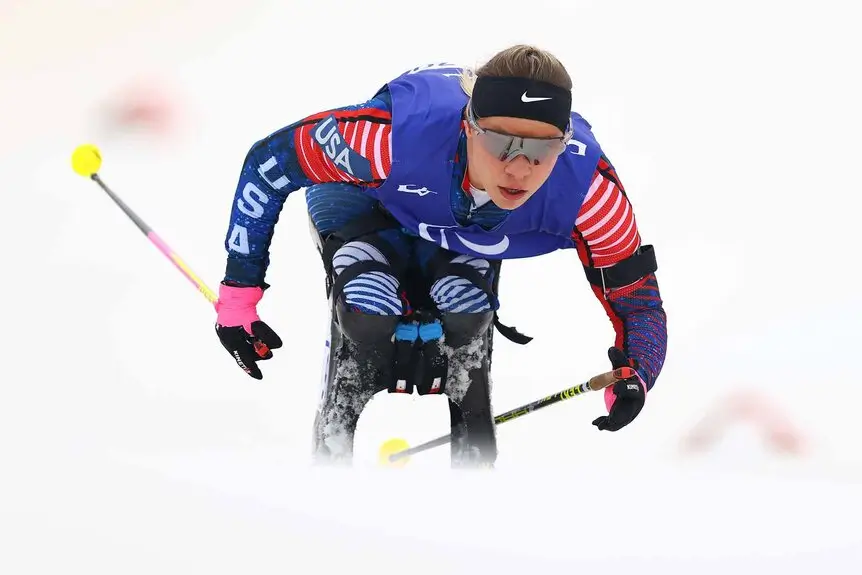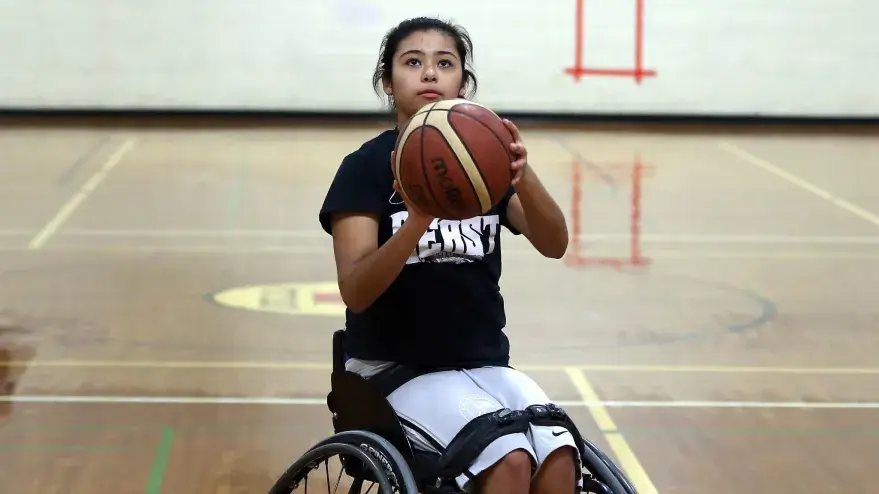The Paris 2024 Olympic and Paralympic Games aimed to make sports venues more accessible for everyone, especially people with disabilities. They changed how venues were built and used, focusing on making them easy to reach and enjoy.
Paris 2024 built new venues, like the Porte de La Chapelle Arena, with features for wheelchair users and others with mobility needs. They also fixed up old places, like the Pierre de Coubertin stadium, to add ramps and special seats.
Every venue had Easy Access Seats (EAS) and Wheelchair Accessible Seats (WAS), so everyone could watch comfortably. You can learn more about these changes on the official site Paris 2024 Accessibility.
Transportation Enhancements

Getting to the venues was made easier with free shuttles for wheelchair users from train stations. They also worked on making buses and trains more accessible, adding more parking spots for people with disabilities. This helped everyone travel smoothly, as noted in city updates City of Paris Accessibility, where India won so many Medals.
Paris 2024 didn’t just focus on the Games; they started programs to grow para-sports, like creating new clubs and using robots so kids in hospitals could “attend” virtually. They also planned to make 17 neighborhoods more accessible, which could help people long after the Games ended, as seen in their legacy plans Team Canada Venue Guide.
This approach likely set a new standard, but some say more work is needed, especially for digital access. Still, it’s a big step forward for making sports inclusive for all.
The Background and Context
The Paris 2024 Games were hosted in France, with over 10,714 athletes from 204 teams participating across 329 events, achieving gender parity with equal quotas for female and male athletes.
Accessibility was a core focus, driven by the slogan “Games Wide Open,” aiming to create barrier-free environments for all, including those with mobility impairments. The City of Paris expected nearly 350,000 visitors with disabilities, prompting extensive upgrades to venues and infrastructure like Dublin.
Venue Accessibility: Redefining Inclusive Design
Paris 2024 reimagined venue accessibility through new constructions and renovations, aligning with adaptive design principles. The Porte de La Chapelle Arena, a newly built venue for badminton and rhythmic gymnastics, was designed with accessible design principles, covering 80% of its surface with greenery for sustainability and ease of access.
The Pierre de Coubertin stadium underwent renovations to enhance accessibility, ensuring ramps and wide pathways for wheelchair users. Other historic venues, like the Grand Palais, received restorations to meet modern accessibility standards.
Key Features

A key feature was the implementation of seating arrangements, with Easy Access Seats (EAS) and Wheelchair Accessible Seats (WAS) available in all competition venues. A single real-time purchasing platform allowed disabled spectators to book tickets alongside a companion, ensuring an inclusive spectator experience.
This approach made sports accessibility a priority, as detailed in the official Paris 2024 Accessibility page.
| Venue | Accessibility Feature | Notes |
|---|---|---|
| Porte de La Chapelle Arena | 80% greenery, accessible design principles | New build for badminton and rhythmic gymnastics, sustainable venues |
| Pierre de Coubertin Stadium | Renovated with ramps and wide pathways | Enhanced for wheelchair users, part of Olympic accessibility efforts |
| Grand Palais | Restored for modern accessibility standards | Historic venue, improved for Paralympic accessibility |
These efforts ensured venues were barrier-free, catering to universal design needs and setting a model for future events.
Transportation: Enhancing Public Transport Accessibility
Reaching these venues was made easier through comprehensive transportation enhancements. Paris 2024 introduced special transfer services, including 200 free shuttles to transport wheelchair users from major Paris stations to competition venues.
These services required advance booking, with a link sent via email, ensuring accessibility for those with mobility impairments. Bookings closed 48 hours before events, as noted in practical information Paris 2024 Accessibility.
The Upgrades
Public transport saw significant upgrades, with plans to make all bus lines accessible by adding around 400 more accessible stops to the existing 1,350. The city also added 1,000 new disabled parking spaces to the 4,400 already available, and increased accessible cabs by 1,000, supported by 650 additional parking permits and high technology.
The Olympic Lanes system facilitated green travel, including transport for disabled individuals, as part of the broader legacy of making Paris a more inclusive city, detailed in City of Paris Accessibility.
| Transport Type | Accessibility Improvement | Impact |
|---|---|---|
| Shuttles | 200 free shuttles for wheelchair users | Connected major stations to venues, enhanced mobility for all |
| Public Transport | All bus lines made accessible, 400 additional stops | Improved access for disabled visitors, part of urban accessibility |
| Parking and Cabs | 1,000 new disabled parking spaces, 1,000 accessible cabs | Increased options for travel, supporting inclusive sports events |
These measures ensured that getting to the venues was as accessible as the venues themselves, addressing a critical aspect of sports accessibility.
Inclusive Programs and Initiatives: Beyond the Venues

Paris 2024 extended accessibility beyond physical spaces through inclusive programs. Para-sport development was a focus, with a network launched to quadruple membership from 1,200 to create 40 new Paralympic sections by the end of 2024, supported by the CPSF and Paris 2024.
This initiative aimed to grow inclusive sports, as seen in the strategy to host major handisport events like the Handisport Open Paris and the World Handisport Athletics Championships in 2023, as noted in City of Paris Accessibility.
The Virtual Participation
Innovative virtual participation was another highlight, with two robots enabling eight hospitals to give disabled children a behind-the-scenes look at the Games. For one hour, these children could connect via mobile devices to explore competition venues and emblematic sites, interact with people on-site, and feel the atmosphere, as detailed in Olympics News.
New practice areas, such as adapted physical activity rooms (SAPAS) in social and medico-social establishments, were established, alongside school sports facilities available outside hours through programs like PEPS and La Relève. These efforts ensured ongoing support for inclusive sports, aligning with the legacy of the Games.
Legacy: Long-term Impact on Urban Accessibility

The legacy of Paris 2024 extends beyond the event, with plans to enhance accessibility neighborhoods in every arrondissement. By 2024, 17 neighborhoods were targeted for improvements under the “Embellir votre quartier” scheme, part of the Olympic Transformation Program, involving the APF-France disability association.
This initiative aimed to create lasting urban accessibility improvements, as seen in City of Paris Accessibility. Permanent mobility solutions included increasing accessible cabs and implementing the Olympic Lanes system for green travel, ensuring continued support for disabled access.
Continued para-sport activities, with new practice areas and ongoing club support, were designed to maintain momentum, potentially hosting more international para-sport events post-Games. This legacy is expected to inspire future events, as noted in Team Canada Venue Guide.
| Legacy Aspect | Details | Long-term Impact |
|---|---|---|
| Accessibility Neighborhoods | 17 neighborhoods enhanced by 2024 | Improved urban accessibility, benefiting local residents |
| Permanent Mobility | Increased cabs, Olympic Lanes system | Sustained transport access for disabled individuals |
| Para-Sport Support | New practice areas, ongoing club support | Growth in inclusive sports, potential for future events |
Conclusion and Future Implications
Paris 2024 reimagined accessibility in venues by integrating inclusive design, enhancing transportation, and launching programs with a lasting legacy. While physical accessibility saw significant improvements, some aspects, like digital access, may require further attention.
The Games set a benchmark for sports accessibility, potentially influencing future Olympic and Paralympic events. This comprehensive approach ensures that venues, transportation, and community initiatives align with the goal of making sports inclusive for all, as evidenced by the detailed efforts outlined in official sources.
